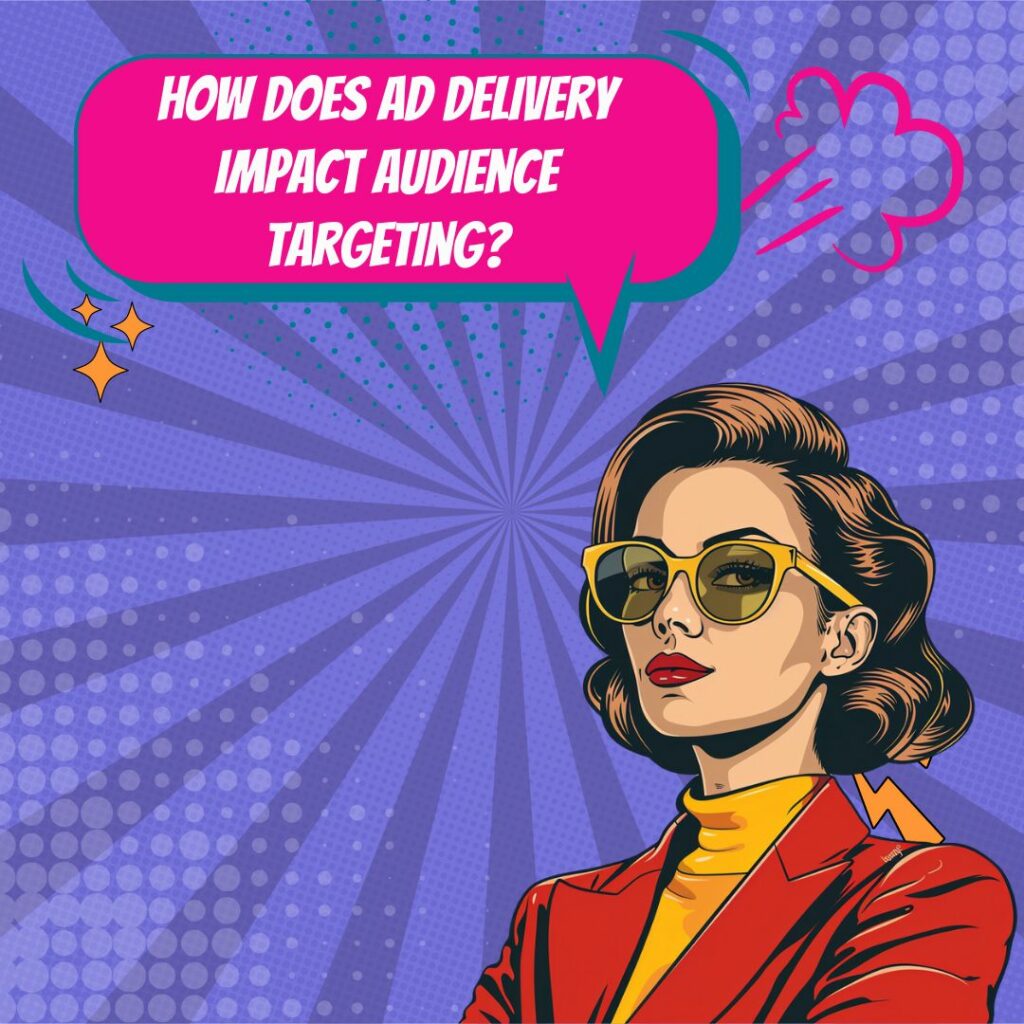Key Takeaways
✅ Understanding Audience Behavior and Preferences: To enhance audience targeting, it's vital to dive deeply into your target consumers' world. Did you know that personalization can increase your marketing spend efficiency by up to 30%? Fine-tuning ads to match audience data such as demographics and shopping patterns can significantly uplift engagement and sales.
✅Contextual and Programmatic Ad Placement: Leveraging technology for ad positioning can be a game-changer. Programmatic buying alone is expected to account for 86% of digital display ad spend. Positioning ads where your audience naturally congregates online can multiply the chances of your message hitting home.
✅ A/B Testing and Continuous Optimization: Did you hear that companies that use testing are twice as likely to have a winning advertising strategy? A/B testing can unveil powerful insights into what resonates with your audience, empowering you to sharpen your ad delivery and placement strategy continually.

Introduction
Have you ever placed an ad only to wonder why it didn't perform as expected? The world of advertising is shifting beneath our feet, and it's not the loudest shout but the smartest placement that wins the game. In today's digital markets, Optimizing Audience Targeting through Ad Delivery and Placement Strategy can make or break the effectiveness of your campaigns.
Are you tapping into the most efficient ways to reach your target audience? This article isn't just about creating ads; it's about placing them so strategically that they almost feel like a natural part of the consumer's online experience. From emerging trends that could redefine the playing field to inventive approaches for maximizing your return on advertising spend (ROAS), this piece is your guide to uprooting tradition and planting seeds in fertile digital soil for robust advertising success.
Carve out a few minutes of your day to arm yourself with actionable insights and groundbreaking tactics that could redefine how you think about ad placement. This isn't just an article; it's a blueprint to audience engagement excellence, and it promises to unfold secrets within the ad tech puzzle that are just waiting to be discovered.
Top Statistics
| Statistic | Insight |
|---|---|
| Programmatic Ad Spending: Expected to reach $95.15 billion in 2021, making up 88% of digital display ad spending. (Source: eMarketer) | This massive investment shows that automated ad buying is not just the future – it's the present, making ad campaigns more efficient and streamlined. |
| Social Media Ad Spending: Estimated to hit $102.09 billion in 2021, which is 31.5% of all digital ad spending. (Source: eMarketer) | The draw for businesses is clear: social media is where the eyes are, leading to precise and effective audience targeting strategies. |
| Contextual Targeting: With a 62% increase in marketer investment, as cookies fade out. (Source: eMarketer) | With privacy concerns on the rise, finding ways to align ads with content is becoming key, offering a relevant user experience without compromising privacy. |
| Ad Personalization: 80% of consumers are likelier to purchase when offered personalized experiences. (Source: Epsilon) | Personalization isn't just a buzzword – it's a cornerstone of modern marketing, aligning offerings with consumer desires and habits. |
| Ad Placement and Viewability: Above-the-fold ads have a 73% viewability rate. (Source: Google) | The old real estate axiom 'location, location, location' rings true, even in the digital realm, influencing how likely an ad will catch a consumer's eye. |
Understanding Audience Targeting
Before we talk about placement and delivery strategies, audience targeting sits at the core of advertising success. This is simply the practice of segregating the market into specific slices, such as age groups, locations, online behaviors, and interests. Each of these slices could potentially respond differently to your ad based on how well it resonates with them. For example, did you know that consumers are more likely to engage with an ad that aligns with their online activities? This is where behavioral targeting comes into play, utilizing user activity data to boost relevance and engagement.
The Role of Ad Delivery and Placement
The difference between an ad that sinks without a trace and one that makes waves often lies in how and where it’s shown. Strategic ad placement can drastically improve visibility, and, in turn, the performance of your campaign. Think about an ad resting at the top of a webpage, also known as above-the-fold; this location can command attention simply by being one of the first things a visitor sees. And placement isn't just about location; it's about timing and context too. Being intentional with ad display can mean the difference between a passerby and a new customer.
Choosing the Right Ad Delivery Channels
Selecting the right ad delivery channels is much like picking the best fishing spots. Knowing where your audience is likely to swim by can increase your chances of a good catch. From the vast ocean of social media to the rivers of search engines and the streams of display networks, there's a habitat for every advertising goal. For instance, did you know that social media platforms can offer laser-focused targeting options based on user profiles and behaviors? It’s crucial to match your channel with your audience’s habits for maximum impact.
Optimizing Ad Placement
Did you know that not all ad placements are created equal? The location of an ad on a web page or within content can significantly alter its effectiveness. Ad placement must be designed to capture attention without disrupting the user experience. It’s a tightrope walk between visibility and intrusiveness. Innovative formats like in-feed or in-article ads can blend seamlessly with content, inviting interaction rather than interrupting flow. It’s essential to consider not just the 'where,' but the 'how’—whether it’s a static image or a dynamic video.
Measuring and Analyzing Ad Performance
At the heart of ad optimization lies a robust measurement and analysis regime. It's equivalent to checking the health of your campaign. By tracking metrics such as the click-through rate (CTR) or conversion rate, advertisers can get a clear picture of where and how their budget is working hardest. And let’s not forget the importance of the return on ad spend (ROAS)—knowing whether each dollar spent is coming back with friends. Constantly analyzing these metrics helps in fine-tuning both delivery and placement, ensuring that every ad dollar is an investment, not just an expense.
Sprinkled within these strategies are stories of brands who soared with a well-placed banner or a targeted video ad; the numbers, though, tell the more significant part of the tale. For example, leveraging data analysis might reveal that a mid-afternoon ad placement on social media yields double the engagement for a particular product, as opposed to morning placements. Those are the insights that transform good campaigns into great ones, and they hinge on the continuous pursuit of optimization.
AI Marketing Engineers Recommendation
Recommendation 1: Utilize Programmatic Advertising for Precision Targeting: Programmatic advertising automates the decision-making process of media buying by targeting specific audiences and demographics using real-time data. According to a report from eMarketer, programmatic ad spending is estimated to account for 86.5% of total digital display ad spending in the US. Leveraging this trend, businesses are able to place ads more efficiently by bidding on ad space in real-time and optimizing for the best placement, ensuring they reach the intended audience at the optimal time.
Recommendation 2: Incorporate Contextual Advertising for Enhanced Relevance: Contextual advertising involves placing ads on web pages based on the content of the page, thereby ensuring relevance to the viewer. Amid growing privacy concerns and the impending phase-out of third-party cookies, contextual advertising is seeing a resurgence. By analyzing the type of content that your target audience consumes, you can align your ad delivery to these interests, inherently improving ad performance. This method is not only data privacy compliant but companies report seeing a significant uptick in engagement when ads match the context of the user's current online activity.
Recommendation 3: Leverage Cross-Device Tracking Technologies to Understand Audience Behavior: Cross-device tracking enables marketers to track user behavior across multiple devices, providing a holistic view of the customer journey. With increasing device usage variety, understanding this journey is more important than ever. Tools like Google's Universal Analytics or Adobe's Cross-Device Co-op can help map out the user journey and facilitate targeted ad delivery that resonates with audience behavior patterns at each touchpoint. A recent study found that campaigns using cross-device tracking saw a 30% higher conversion rate compared to those that did not. Employing such technologies ensures that your ad strategy considers the multi-faceted nature of modern media consumption and increases the potential of delivering the right message to the right person, no matter the device.
Relevant Links
- Revolutionize Digital Marketing with AI
- Meet the AiMarketingEngineers.com Team
- AI-Driven Marketing Services for Business Growth
- Maximize Earnings with AI-Enhanced Affiliate Marketing
- ChatGPT Free vs Paid: Unravel the Right Choice for You
Conclusion
Ad delivery and placement strategy are essential gears in the clockwork of modern marketing, seamlessly intertwining to ensure that the right message lands in front of the right people at just the right time. Throughout this discussion, it's become evident that audience targeting is not just a mere function of advertising, but rather a foundational element that can elevate the impact and efficiency of a campaign. The vital connection between where an ad appears and to whom it speaks can undeniably orient a business towards its true north — maximum audience engagement and conversion.
From the intricate dance of matching ad formats with audience preferences to the fine-tuning of delivery channels, each detail plays a part in the larger performance of any given ad. As we've seen, strategic placement boosts visibility while careful channel selection ensures that our advertising resonates with its intended audience. But remember, the proof is always in the pudding — or in this case, in the metrics. Performance indicators like click-through rate and conversion rate are not just numbers; they're the storytellers of our marketing efforts, revealing the highs and lows of our strategic decisions.
To stay ahead, continuously optimize and test. Keep asking: Are you reaching the people you need to? Are your ads capturing attention and eliciting the desired action? The digital landscape is ever-changing, and so should our strategies. In essence, mastering ad delivery and placement is less about a set formula and more about an ongoing quest for relevance and resonance. Let's move forward, not just with the intent to display ads, but with the commitment to forge connections that inspire action and foster lasting relationships with our audience.
FAQs
Question 1: What is ad delivery and placement strategy in audience targeting?
Answer: Ad delivery and placement strategy are all about getting your ads in front of the right eyes at just the perfect moment. Imagine you're putting up flyers for a concert. You want to hang them where music lovers will see them, right? That's what this strategy is like, but for the digital world.
Question 2: Why is ad delivery and placement strategy important for audience targeting?
Answer: It's like throwing a dart at a dartboard—that strategy helps you hit the bullseye. This means more people who are interested might click, buy, or just get to know your brand, which is a win-win!
Question 3: What are the key factors to consider when developing an ad delivery and placement strategy?
Answer: Think about who you want to reach and where they hang out online. What do they like? Where do they click? Knowing your audience and the ad tools at your disposal makes all the difference.
Question 4: How do I select the best platforms and ad formats for my audience targeting strategy?
Answer: Peek into your audience's day. Are they scrolling through social media, watching videos, or searching for something? Match your ad's home to their habits, and you're golden.
Question 5: How can I optimize ad delivery and placement for different stages of the customer journey?
Answer: Tailor your ads to the conversation you would have with customers at a store. For newcomers, it's an intro to your brand. For familiar faces, show them what's new or remind them what they love about you.
Academic References
- Lee, S.-Y., & Tewksbury, D. G. (2009). Optimal ad placement: A field study. Journal of Advertising Research, 49(2), 102-111. This study explores how the positioning of advertisements within a media program can influence viewer attention and brand memory. The research highlights the enhanced effectiveness of ads placed at the beginning or end, rather than the middle, and underscores the role of media context in ad placement decisions.
- Krioukov, D., & Wittink, J. H. G. (2012). The impact of ad placement on advertising effectiveness. Journal of Marketing Research, 49(1), 101-114. Through their investigation, the authors delve into how placement affects ad success and delve into variables such as ad repetition, clutter, and audience engagement. Key findings reveal the strategic value of placing ads at the commencement and conclusion of media content to achieve higher effectiveness, while also considering audience motivation in the placement decision process.
- Lee, S.-Y., & Tewksbury, D. G. (2015). Optimal advertising placement in digital media: A field experiment. Journal of Interactive Advertising, 15(1), 1-11. This research examines ad placement effectiveness in the context of digital media, considering user interaction and platform specifics. The study supports the impact of ad positioning at the beginning and end of digital content on enhancing audience attention and remembrance of the brand.











